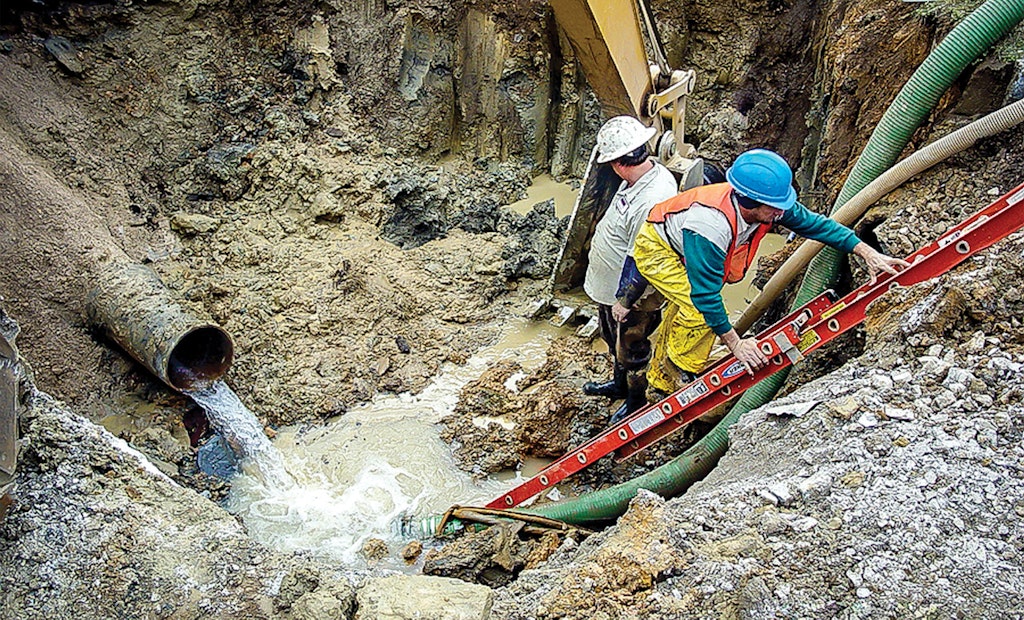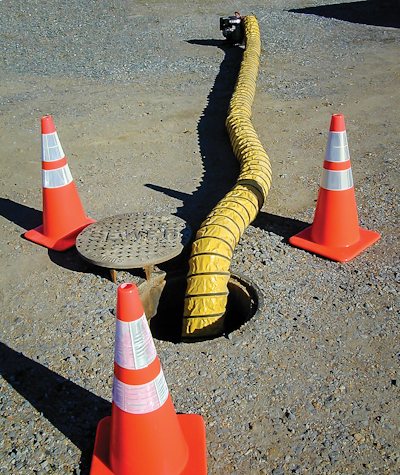
Interested in Safety?
Get Safety articles, news and videos right in your inbox! Sign up now.
Safety + Get AlertsEditor’s Note: This is the second installment of a two-part article that discusses 14 steps you and your work crews must plan for to greatly reduce — and even eliminate — the dangers around trenches and excavations. Here we provide the final eight items. Part 1 of this article debuted on Feb. 23.
The General Requirements Section of OSHA’s Subpart P provides a number of common-sense steps to help ensure worker safety. As with any OSHA Standard or other safety procedure, it is important to always remember that these are the minimum requirements to ensure safe job sites.
7. Hazardous atmospheres
One of the competent person’s responsibilities is to prevent employees from being exposed to hazardous atmospheres in the air or dangerous environments.
- Oxygen-Deficient Atmosphere — Normal air is 20.9 percent oxygen. An oxygen-deficient atmosphere has less than 19.5 percent oxygen.
- Oxygen-Enriched Atmosphere — It has 23.5 percent or more oxygen.
- Carbon monoxide causes oxygen starvation, and can be fatal at a concentration of just 1.0 percent for one minute.
- Hydrogen sulfide is a very common toxic gas, and methane is a very common flammable gas. Both are regularly found in underground construction, particularly around sewers.
If there is a possibility that a hazardous atmosphere exists, or could reasonably be expected to exist, the air should be tested before employees enter a trench or manhole. Provide respirators or ventilation when needed. And retest the air continuously to ensure the trench remains safe.
8. Emergency rescue equipment
Such equipment must be available when a hazardous atmosphere exists or could reasonably be expected to exist. Employees entering confined spaces must be properly trained. Harnesses and life lines are required whenever employees enter bell-bottom pier holes and other deep confined spaces. Life lines must be attended at all times.
9. Water accumulation
Water must be controlled to prevent cave-ins. Methods for controlling water vary with each situation. Employees are not permitted to work in trenches where accumulation exists unless:
- Special support systems or shields are used to protect employees from cave-ins
- Water-removal equipment is used and monitored by the competent person to prevent water accumulation
- Safety harnesses and life lines are used to protect employees
Surface water must be diverted or controlled. The competent person must inspect the trench after each rain storm.
10. Stability of adjacent structures
The objective is to protect employees from cave-ins.
- A support system, such as shoring, bracing or underpinning, must be used to support structures that may be unstable due to excavation operations
- Excavating below the base or footing of a foundation or wall is not permitted unless:
— A support system is provided to ensure the stability of the structure
— The excavation is in stable rock (this is very rare)
— The operation is approved by a registered professional engineer - Support systems must be provided for sidewalks, pavements and other structures that may be affected by excavation operations
11. Protection of employees from loose rock or soil
Employees must be protected from being struck by soil or rocks that are falling or rolling from the edge and face of a trench. Spoils and equipment must be set back at least 2 feet from the edge of a trench.
12. Fall protection
It is required that walkways and bridges be provided over trenches that are least 6 feet above lower levels and are greater than 30 inches wide. Bridges and walkways must be equipped with standard guard rails and toe boards. Additional fall protection may also be required.
13. Remotely located excavations
Examples are wells, pits, shafts, trenches, other excavations, etc. They must be backfilled, covered or barricaded.
14. Inspections
A competent person must make all inspections.
 About the author
About the author
David Dow is chair of the training committee of the North American Excavation Shoring Association (NAXSA) and co‑founder and vice president of TrenchSafety and Supply, Inc. NAXSA was formed in July 2014, with the core purpose of promoting the safe and effective use of excavation shoring equipment and practices. The ultimate goal of the association is zero deaths and injuries in the excavation construction industry. For more information, visit www.naxsa.com.
This article and all photos are copyright 2015 TrenchSafety and Supply Inc. Used with permission of TrenchSafety and Supply Inc. for this specific article.







